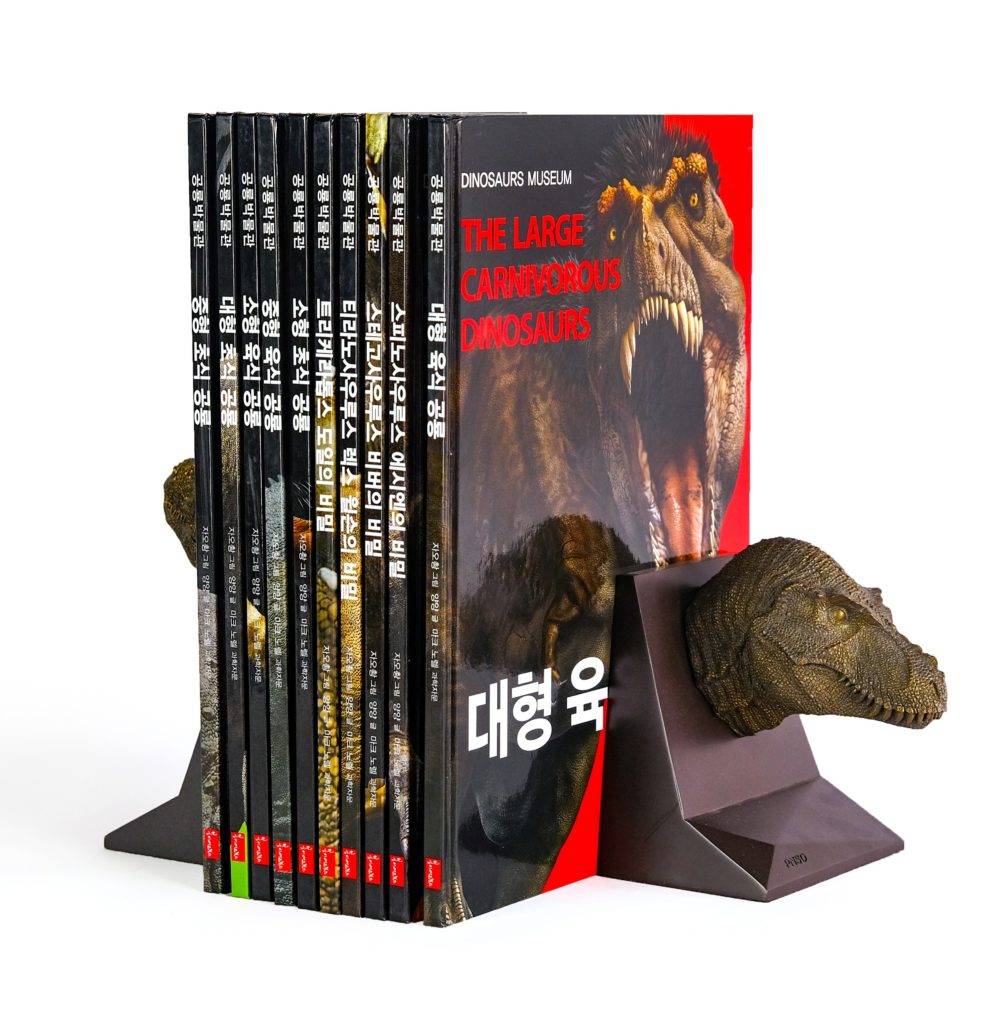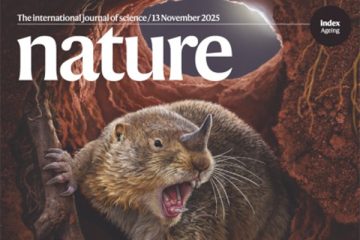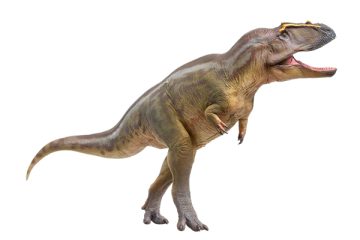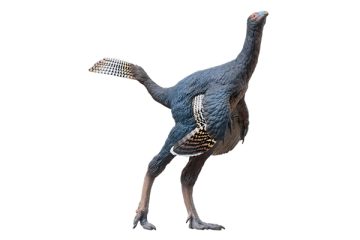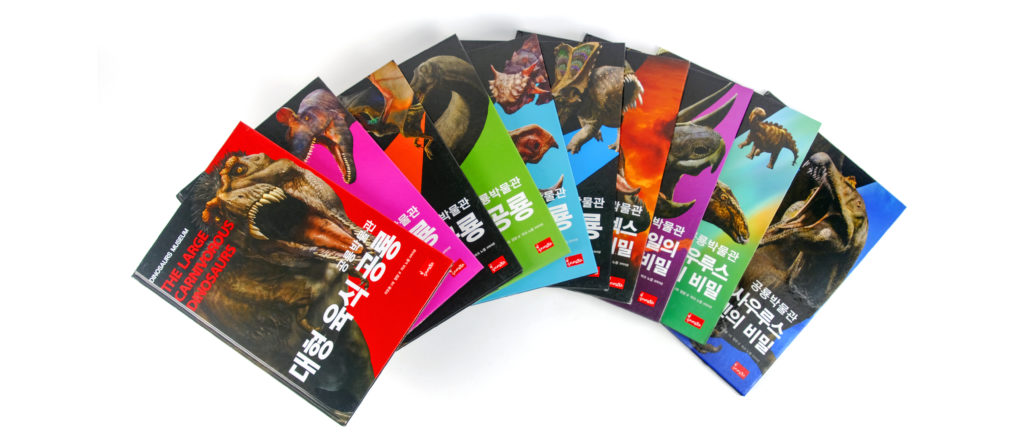
In October 2022, ten volumes of the PNSO Dinosaur Museum series, scientific art books by Zhao Chuang and Yang Yang, were officially published and released in Korean. As an original work of PNSO, the Korean version of this series has been licensed to the Korean publisher Bomi Artbooks through the copyright agency CA-LINK International.
The ten published Korean volumes include The Large Carnivorous Dinosaurs, The Large Herbivorous Dinosaurs, The Medium Carnivorous Dinosaurs, The Medium Herbivorous Dinosaurs, The Small Carnivorous Dinosaurs, The Small Herbivorous Dinosaurs, The Secrets of Wilson the T. rex, The Secrets of Doyle the Triceratops, The Secrets of Biber the Stegosaurus, and The Secrets of Essien the Spinosaurus. All works in this series come from the research results of “Darwin: An Art Project of Life Science” of “PNSO’s Scientific Art Projects Plan: Stories on Earth.” The PNSO Dinosaur Museum book series has been published in Chinese (published and distributed by GUOMAI Culture and LELEQU), Italian, and French (published and distributed by NuiNui Publishing). Audio and video programs of the same series have been launched on Himalaya, MI TV, Youku Video, and IPTV in various provinces and cities. Welcome to listen and watch!
Today, we have a particular conversation with Ms. Yang Yang, the science writer for children, who shares the creation of the PNSO Dinosaur Museum book series so that more parents and readers can understand more about this book set and have a pleasant reading time together.
Q: Could you please briefly introduce the PNSO Dinosaur Museum series?
Yang Yang: The PNSO Dinosaur Museum series includes ten volumes, respectively depicting a specific dinosaur group or comprehensively analyzing the characteristics of a particular dinosaur species, which is a set of popular science books with a certain depth. PNSO Dinosaur Museum is only one thematic series of the PNSO Museum series. PNSO Museum is the most significant volume of popular science works that Zhao Chuang and I have created by far.
Besides the PNSO Dinosaur Museum with dinosaurs as the characters, the PNSO Museum series also covers a broader range of content. Currently, the following sets have been published in Chinese: PNSO Pterosaur Museum, consisting of PTERODACTYLOIDS and NON-PTERODACTYLOIDS, which profoundly describe the pterosaurs that lived in the Mesozoic; PNSO Marine Museum, consisting of The Cambrian Explosion, The Great Development of Life, The Secrets of Whales, The World of Sharks, The Secrets of Mosasauridae, The Secrets of Ichethyosauria, The Secrets of Plesiosauria and The Secrets of Pliosauridae, which take the readers on a journey through the oceans from ancient times to the present day and learn more about those mysterious marine animals; and PNSO Animal Museum, consisting of Big Cats, Small Cats, The World of Elephants1 and the World of Elephants 2. Some of these books have been published in French, Italian, Korean, etc.
In the future, we will continue to work on the PNSO Museum series involving more extinct and extant animals.
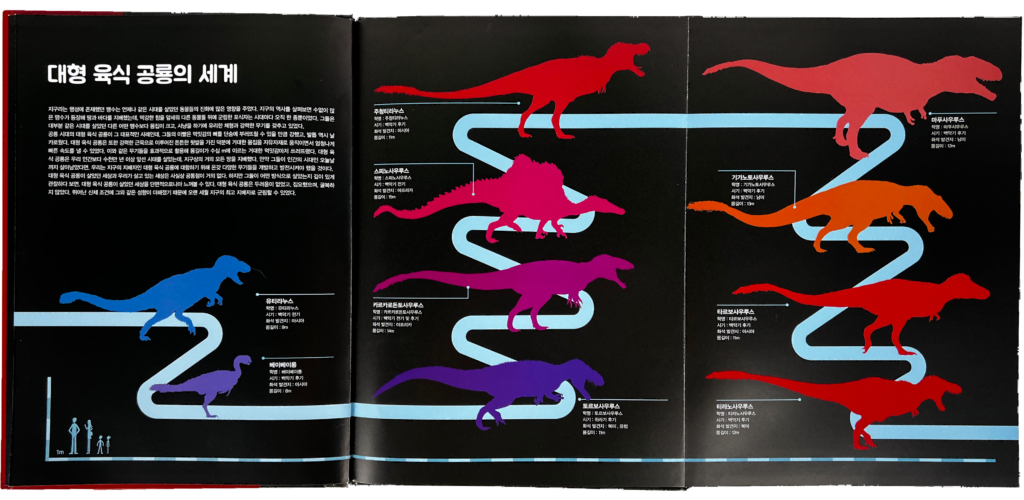
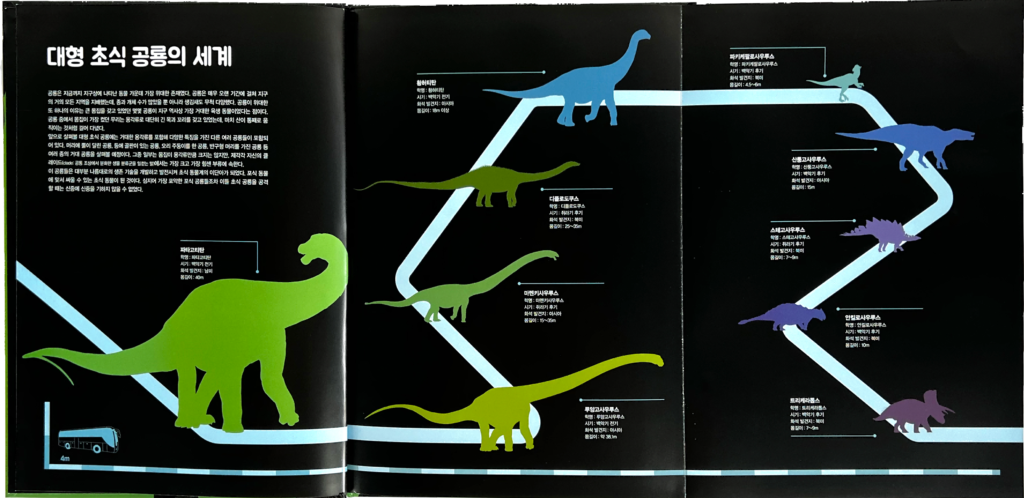
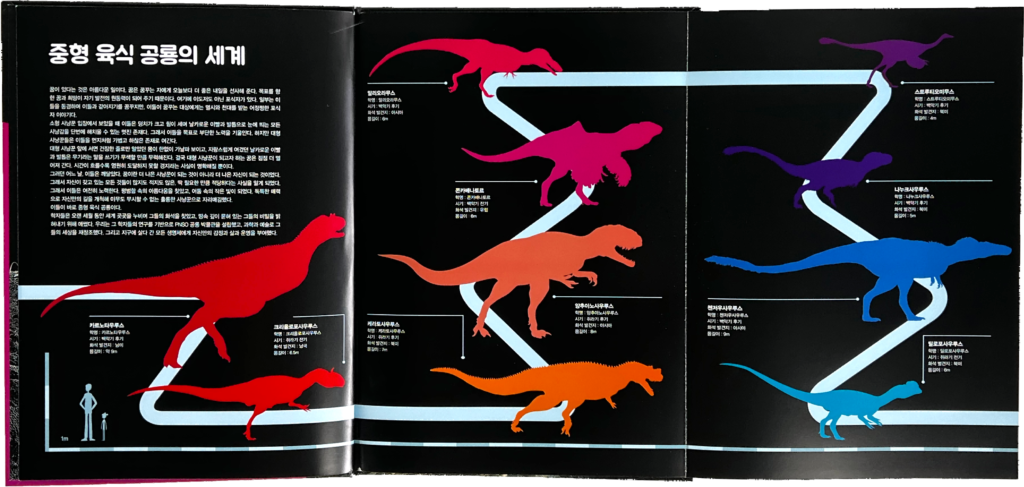
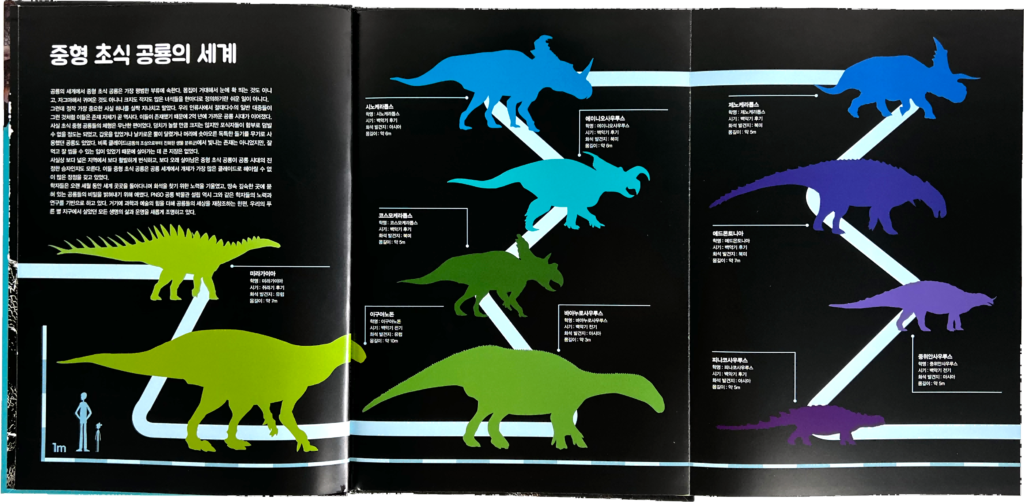
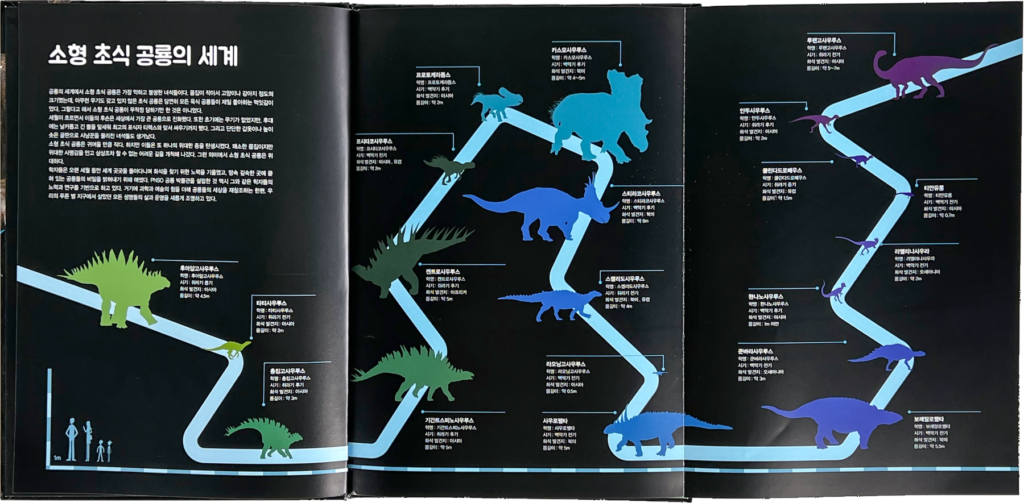
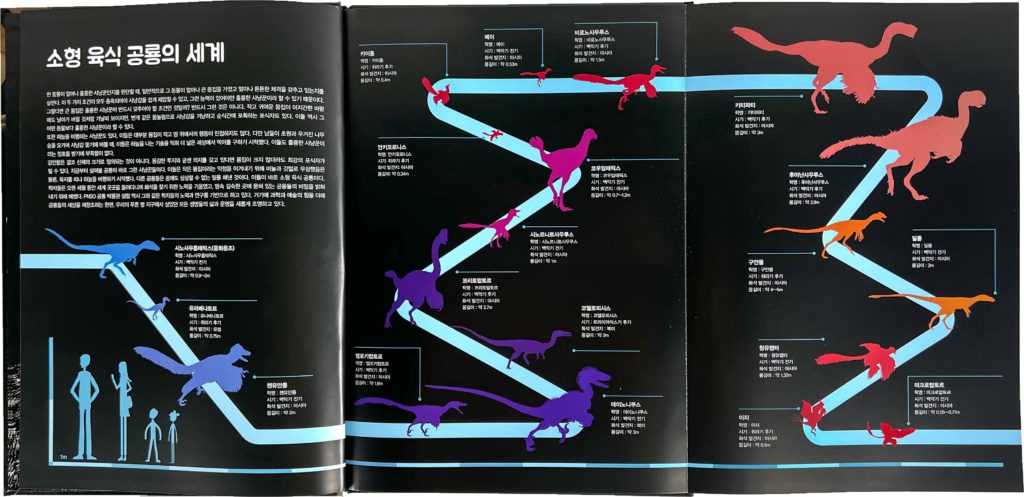
Table of Contents
Q: This is a massive creative project. How did you and Mr. Zhao Chuang determine to get deep into the creation of the “Museum on Books?”
Yang Yang: PNSO Museum is a project that has been fermented for several years. Zhao Chuang and I always talked about it in the years before it was created. Besides creating books, most of our daily work is related to exhibitions. We have cooperated and done exhibitions with many museums in China and abroad and interacted with many children who visit the exhibits. The idea of making books like the PNSO Museum gradually came into our minds based on our work. We wondered if we could create a museum on books for children that they could visit at home anytime and anywhere so that when they could not visit the museum, they could open these books and feel like they were in the museum.
More importantly, we also want to give children who live in more remote regions and do not have the opportunity to visit a real museum the chance to have such an experience.
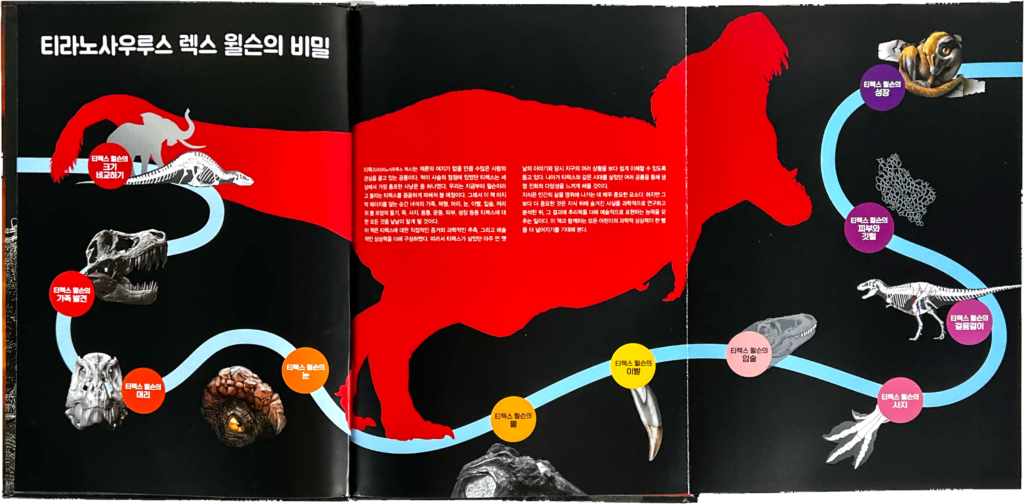
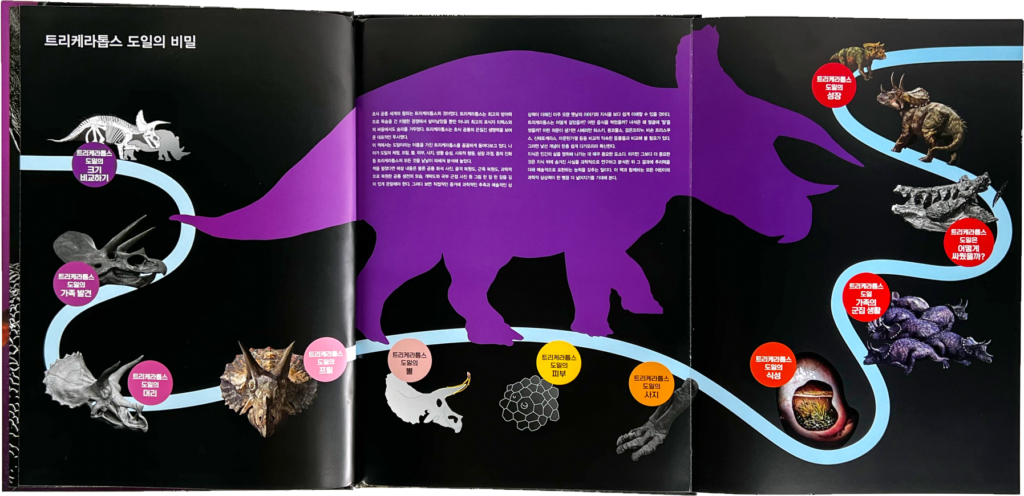
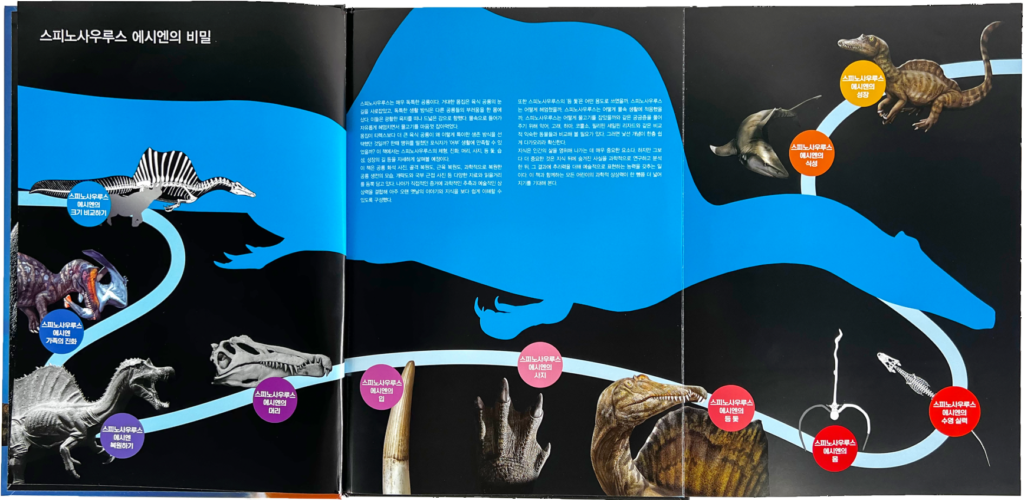
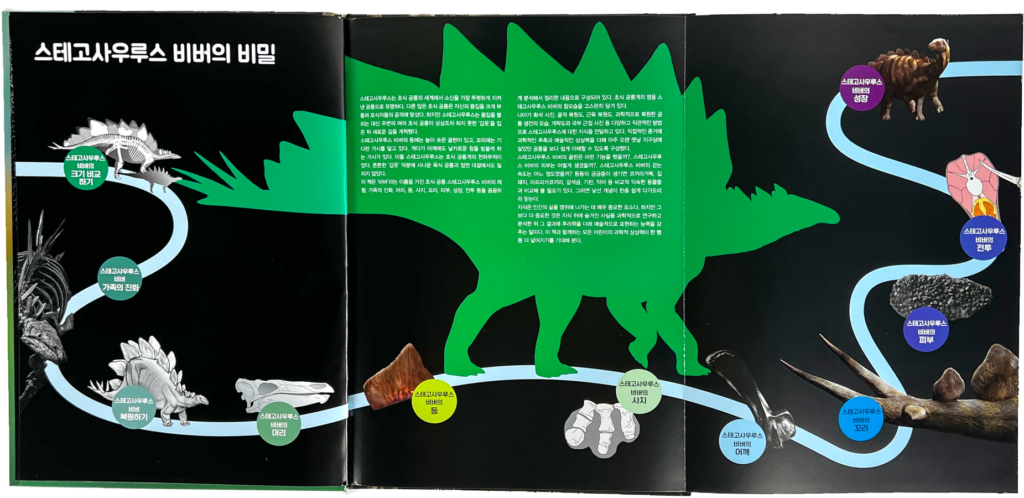
Table of Contents
Q: Why do you think museums would attract children? What do children get from museums?
Yang Yang: Museums are like a pair of bright eyes that can see every corner of the world and an intelligent brain that can hold many of the world’s problems. Although the space of a museum is limited, when children put themselves into it, the world they feel is infinite. It is a rich and diverse world with different dimensions and even a world that transcends time, which will be quietly implanted into their hearts during their visit. Museums can greatly satisfy children’s curiosity, answer their questions, and allow them to break through the limits of time and space to understand a wider world.
So, at the end of 2018, we started to bring the idea into being little by little, hoping to create a museum belonging to children. This “museum” can be placed at home and visited without stepping out of the house. The current set of “Museums on Books” focuses on some critical species, and we hope to lead children to understand them, feel the incredible power brought by the life of billions of years ago, empower children to explore the unknown world and get children a mind that knows respect and tolerance at the same time.
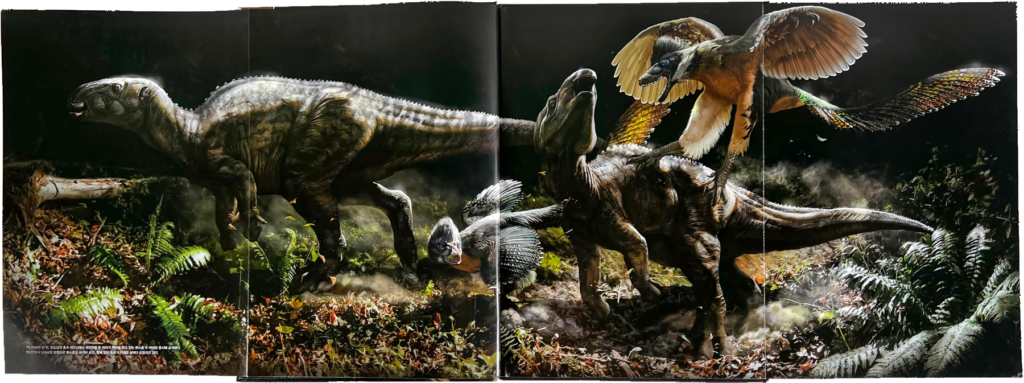
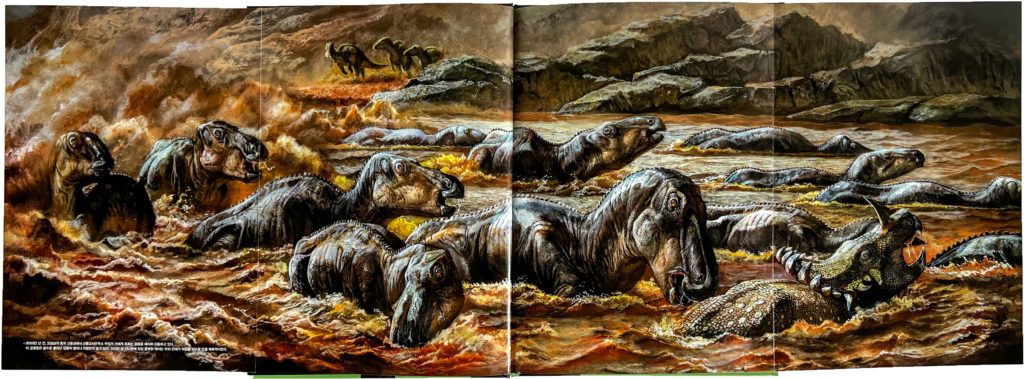
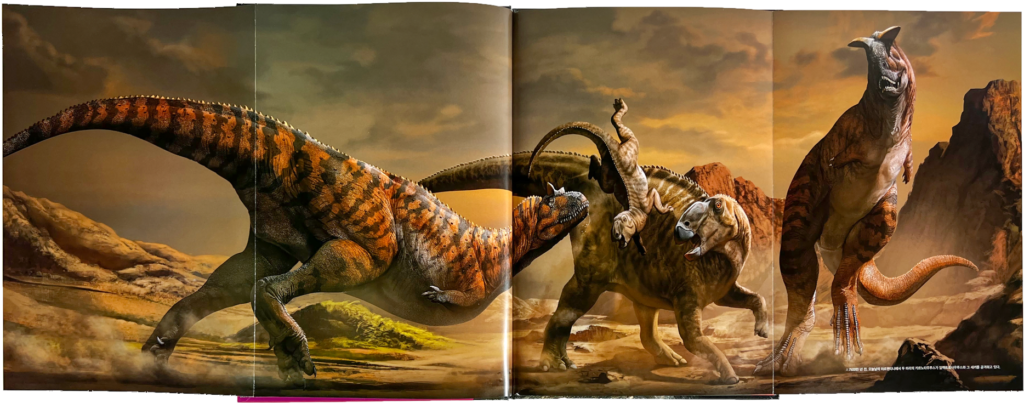
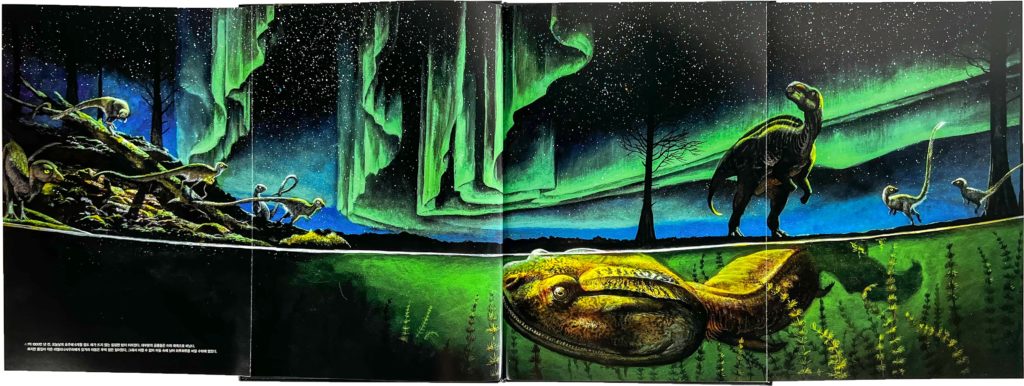
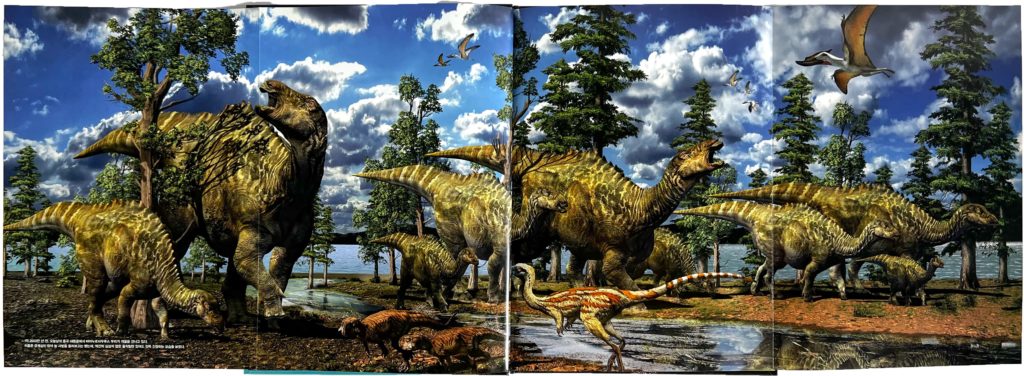
Inner Pages
Q: Can you tell the readers about the characteristics of the illustrations and text of this series?
Yang Yang: If you open the books of the PNSO Museum series, you will be fascinated by the paintings. We have adopted the format of super-long fold-out pages with a full-extended length of 1 meter to show the involved species, presenting their different physical details. This format allows us to have enough space to elaborate on the characteristics of the animals, even the subtle details, greatly enhancing the sense of reality and making them look as if they were right in front of us.
The readers might be unfamiliar with many extinct animals, so to enable them to have a better understanding, we have chosen a variety of paintings, including life image reconstructions that scientifically present the physical features of animals, living habit reconstructions which vividly restore the living environment and life scenes of animals, as well as skeletal reconstructions, muscle reconstructions, close-ups, body anatomy, fossil burial diagrams, etc. which deeply analyze each animal from different perspectives.
Many of these paintings were created for use in papers published in authoritative scientific journals such as Nature. Many others were once designed for large exhibitions in national and world-class museums. Therefore, the paintings presented in this series are not only scientifically rigorous but also of high artistic value. They are a practice that blends science and art, showing one after another life that once lived on Earth from multiple perspectives.
The pursuit of science and art in the PNSO Museum series is not only reflected in the paintings but also in the text. As new fossils are constantly being discovered or previously collected fossils are re-studied, many new insights are being developed, and research findings on dinosaurs and other prehistoric creatures are emerging. We keep tracking these new results and presenting them in our creations, and we try to ensure that our works bring the most up-to-date and accurate scientific facts to our readers. Sometimes the descriptions of many species are speculative due to incomplete fossil evidence, or different scientists do not share the same views on the same issue. We presented them as comprehensively as possible for our readers to make their analyses and judgment.
For example, in the book, we have talked about the largest carnivorous dinosaur, the Spinosaurus, because in recent years, new Spinosaurus fossils have been found and studied, so scientists have significantly changed their perception of Spinosaurus. Its body length is not 18 meters as previously thought but only about 15 meters, and it spent most of its life in the water rather than on land, etc. All these inferences made by paleontologists are based on the new Spinosaurus fossils collected in Morocco in recent years. However, this conclusion may also be temporary, as if more fossils of Spinosaurus are found in the future, our knowledge of it may also change.
Of course, although the content of these books is highly specialized and professional, it is told in a chatty and lively way so children can read it more easily.
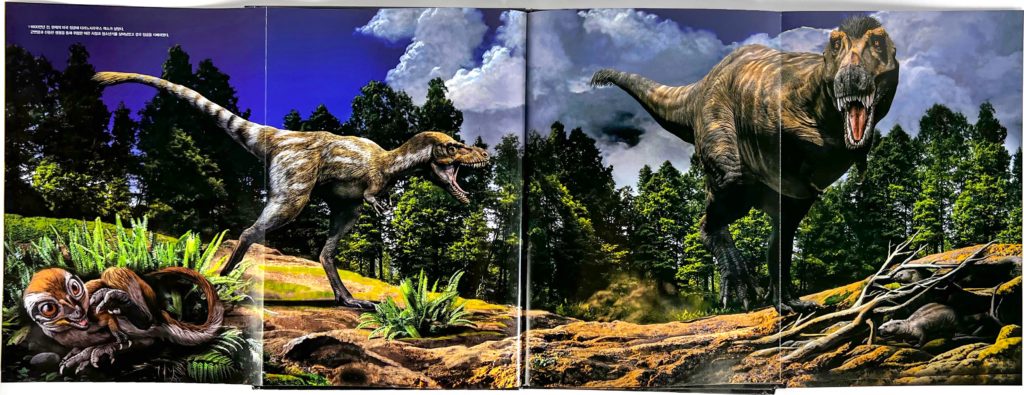
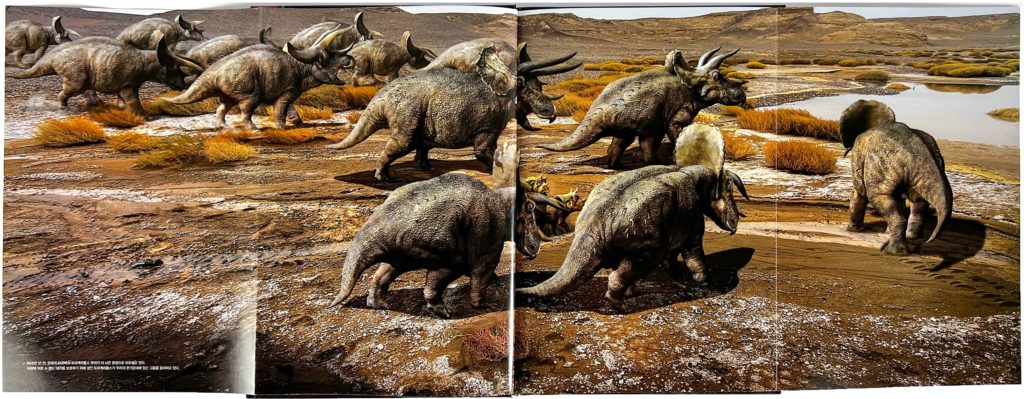
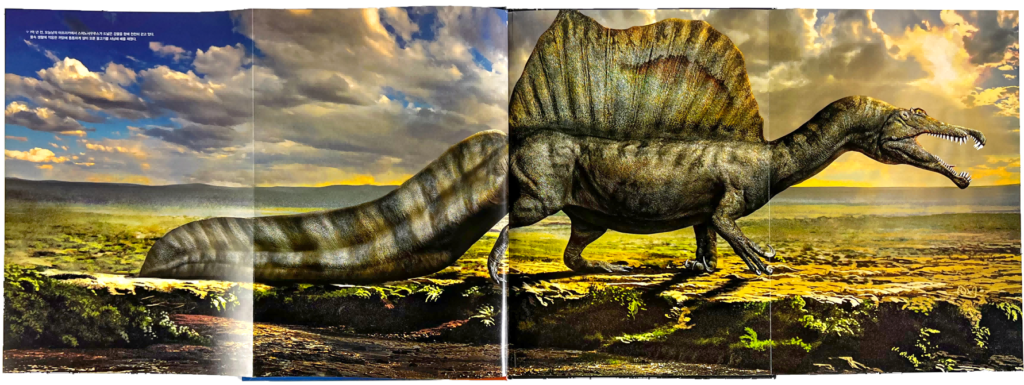
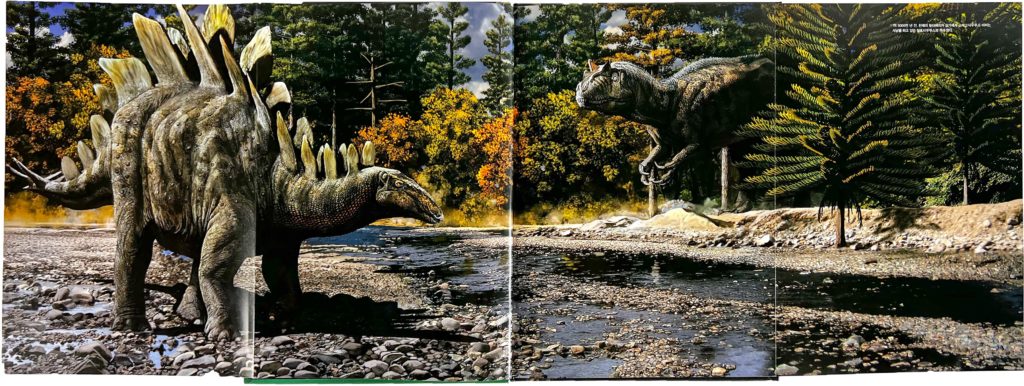
Inner Pages
Q: What kind of experience do you want children to have while reading this set of books? How should parents participate in family reading activities?
Yang Yang: The PNSO Dinosaur Museum series is a set of popular science books, but we hope that it will bring readers, especially children, not only scientific facts but also the awareness of understanding the world across time and space, the enhancement of scientific thinking skills, the cultivation of the spirit of scientific exploration, and the construction of aesthetic skills.
We share with you examples of how this series achieves these goals, which parents can refer to, and guide and help their children gain a more profound cognitive experience in reading.
Activate the door to time and space and develop the knowledge of the world
From 234 to 66 millions of years ago, the world in these distant days was dominated by a particular animal called dinosaurs.
What was the Earth like in such a distant past? How were the continents distributed? How similar did the Earth look to today? Where did the dinosaurs live then? Where are those places on today’s Earth? Africa is dry and hot now, but do you know what it was like 100 mya? What kind of natural environment did the Spinosaurus enjoy there?
We describe the Earth of billions of years ago through diversified dinosaurs and narrate today’s Earth based on scientists’ excavations and research on dinosaurs. In such a narrative, we connect the present of the Earth with its past. In this set of books, a specific continent or a specific city is mysterious for children because they see not only the continents and cities we can see today but also what they looked like billions of years ago.
For children, this set of books seems to activate a door to time and space, allowing them to travel freely through the vastness of time and space, giving them a greater perspective on the world.
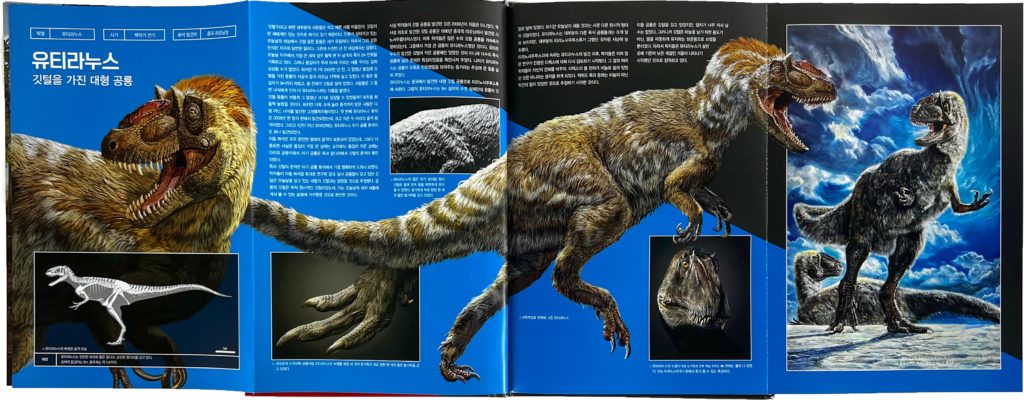
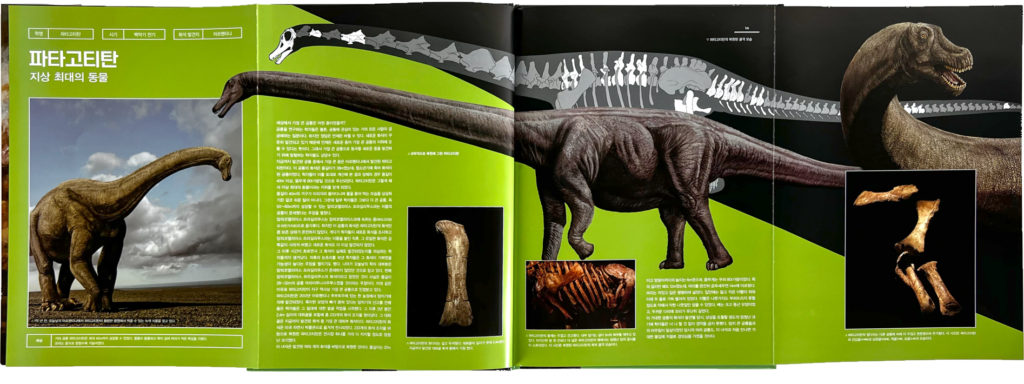
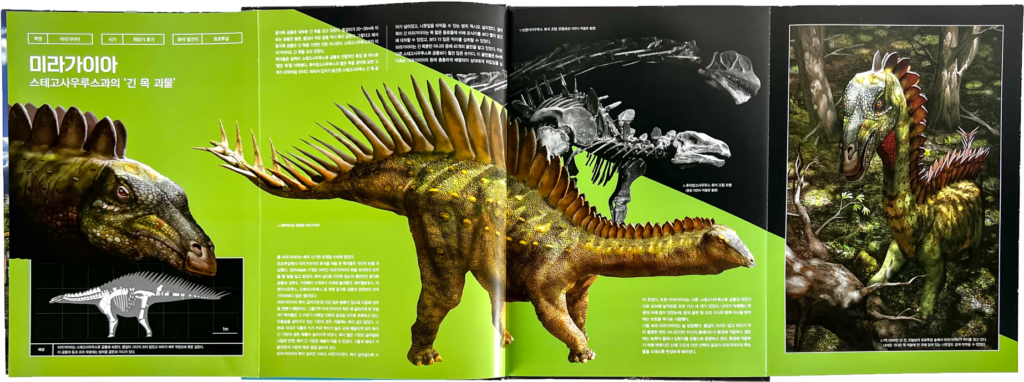
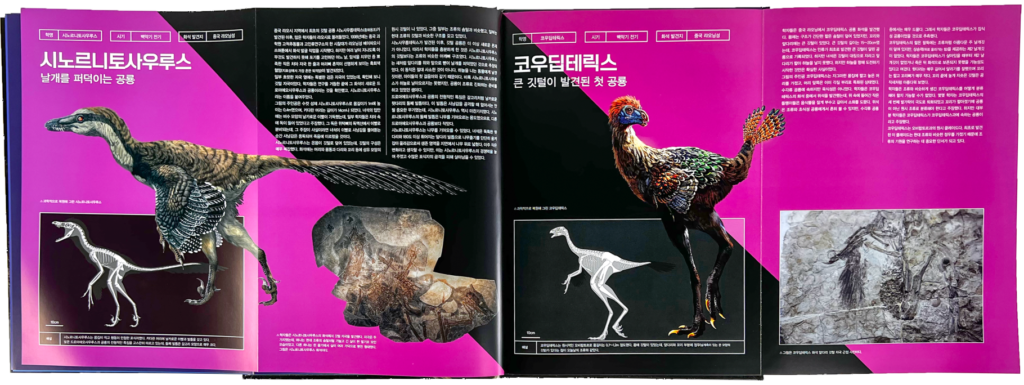
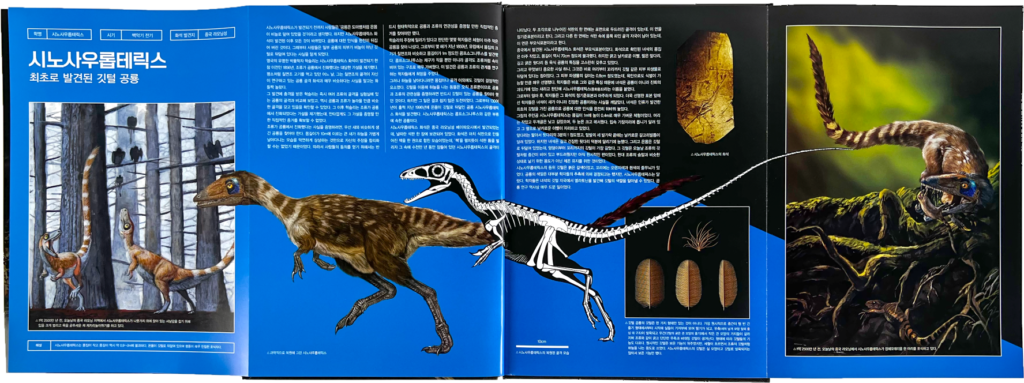
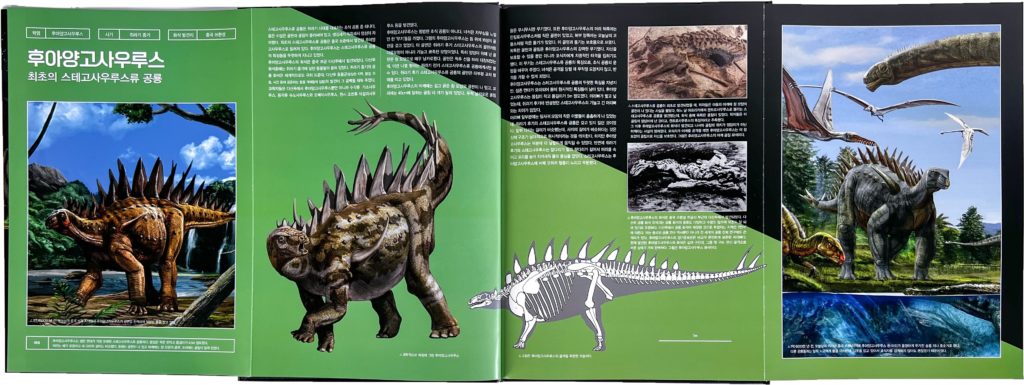
Inner Pages
Cultivate scientific thinking skills and inspire the philosophical thinking
Tyrannosaurus rex was not the largest carnivorous dinosaur, but what made it the best hunter? Why did Tyrannosaurus rex grow feathers? How did scientists infer that Spinosaurus was a semi-aquatic dinosaur? What exactly is the relationship between dinosaurs and birds ……
The facts we narrate in the PNSO Dinosaur Museum series are not just about getting the encyclopedic entries of scientific names, body sizes, and diets of dinosaurs or other prehistoric into your child’s head, but about providing a process of constant thinking, exploration, questioning, and proof-seeking. By reading the PNSO Dinosaur Museum series and facing each species that they want to know, children are not passive recipients, but can ask questions, think, doubt, analyze, and ultimately find the correct answers, which is the basic process of scientists doing research and one that children can experience in reading. This kind of reading can immensely inspire the children’s interest in science and scientific thinking methods, and it can also effectively develop children’s scientific thinking skills and scientific exploration spirit.
At the same time, readers will find many words in the books like “probably,” “perhaps,” and “about“… … For example, when introducing Yandusaurus, we say, “(it) had a long tail, and the caudal vertebrae were probably tightly attached, making the tail very stiff.” We used the word “probably” rigorously because only a few fossils of Yandusaurus discovered. We reconstructed its tail based on its relatives. This is a common method used by scientists in dinosaur research, but it does not mean that the restoration is entirely correct; it is only an inference, so we need to use the word “probably.”
Another example is Tianyulong. It had three kinds of teeth in its mouth, which is very peculiar. Why were its teeth like that? We describe it like this: “the peculiar teeth suggest that Tianyulong might not only feed on plants, and it might be an omnivore.” We use the word “might” to tell children that this is one of the possibilities, but it does not mean it is certain.
When reading the PNSO Dinosaur Museum series, children can constantly build up the idea that the world may be like this, not necessarily like this; that dinosaurs might look like this, not necessarily like this; that there is such an explanation for a problem, but there may also be other explanations; that there is such a reason for a phenomenon, but there may also be other reasons. Through such reading, children can be trained to have a fundamental scientific spirit, which inspires philosophical thinking.
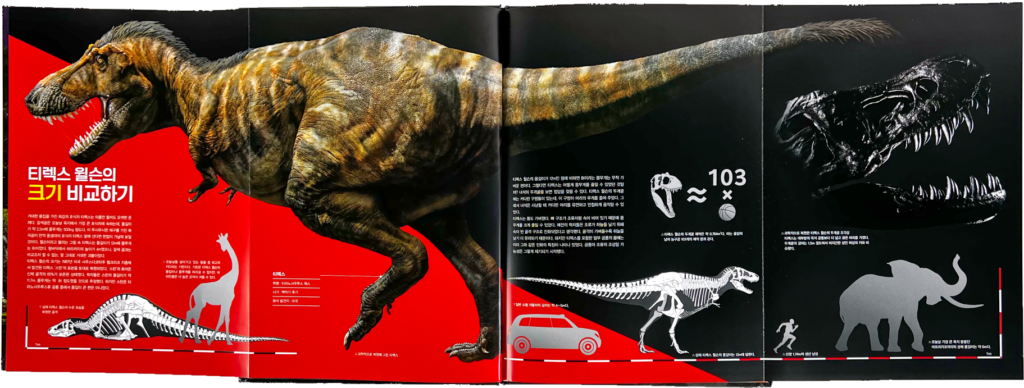
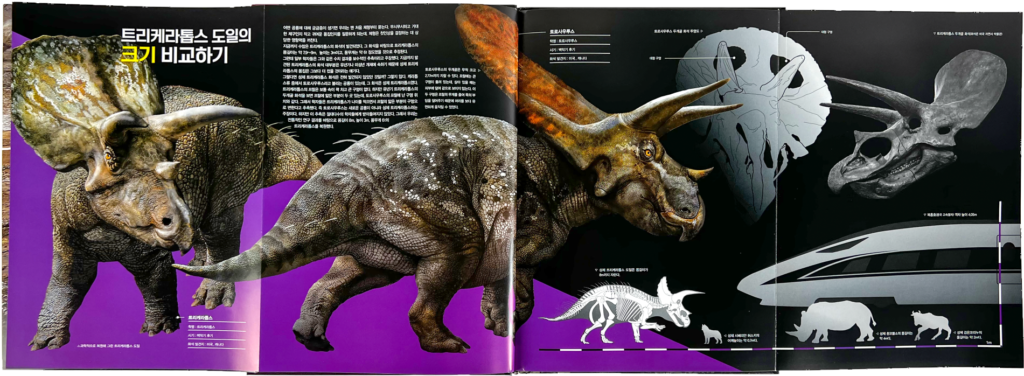
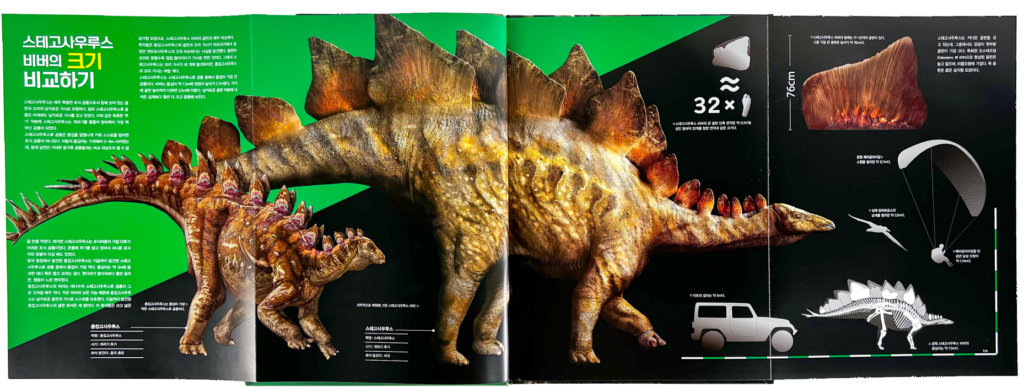
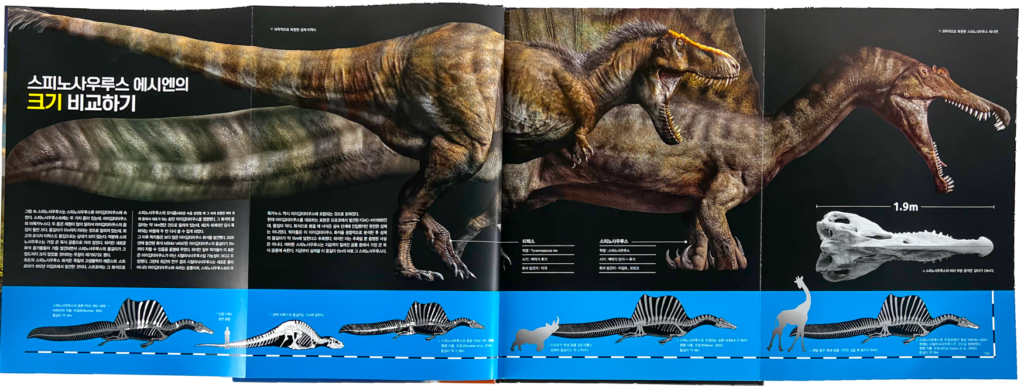
Inner Pages
Learn while playing and nurture the aesthetic ability
The PNSO Dinosaur Museum presents many artworks, many of which are shown in the world’s top museums, bringing a visual feast to children. Some dinosaurs appeared in the books; PNSO has also launched the same model-toy products with online supporting videos, including how-to-draw tutorials and get-know-model recorded by Zhao Chuang. Children can follow Zhao Chuang to learn the characteristics of prehistoric animals and learn how to draw these prehistoric animals scientifically and artistically. This plays a role in enhancing the aesthetic and hands-on skills of children.
We have been hoping more and more families and readers can join the scientific art world of PNSO and create more amazing stories on Earth!
